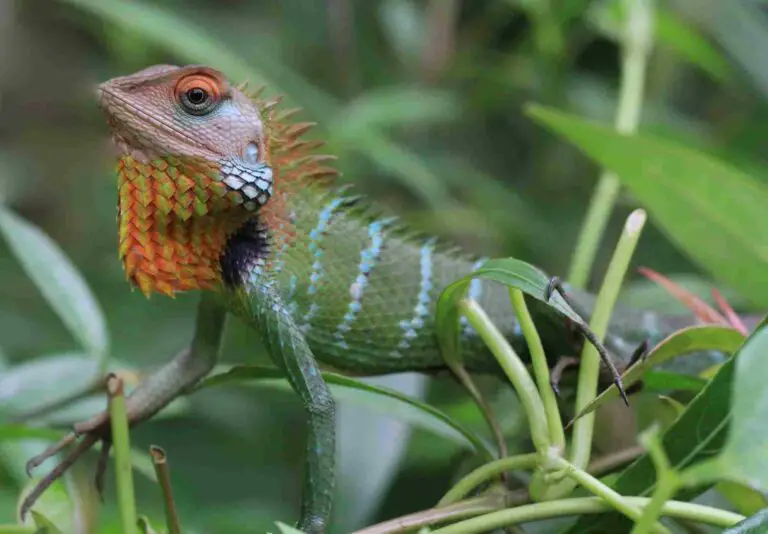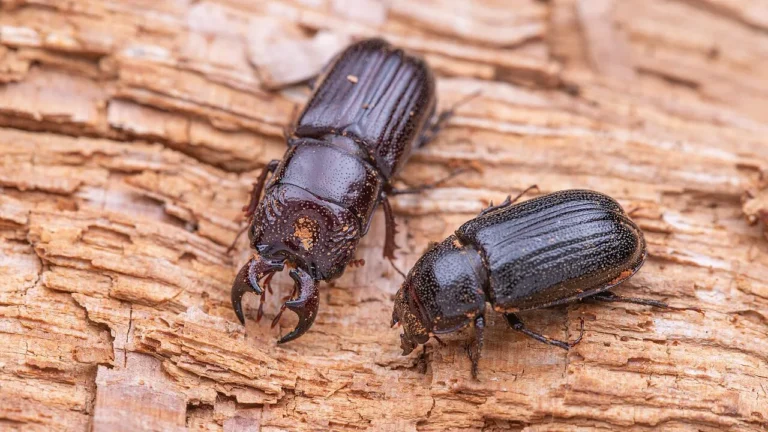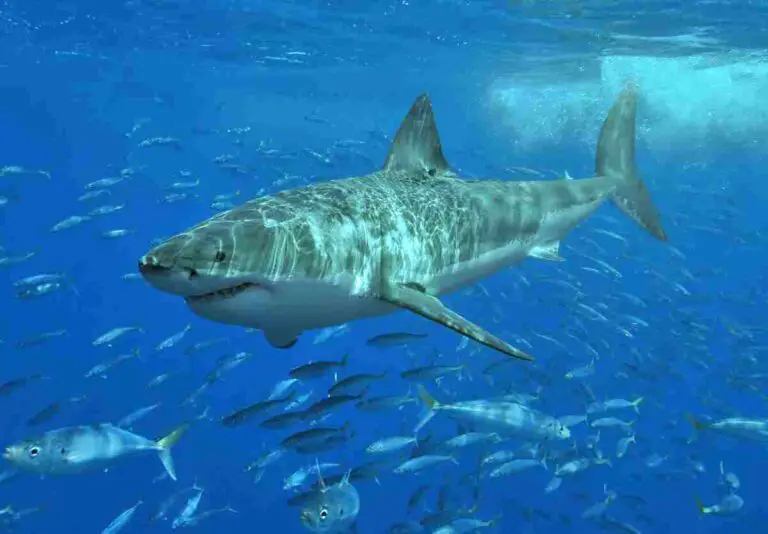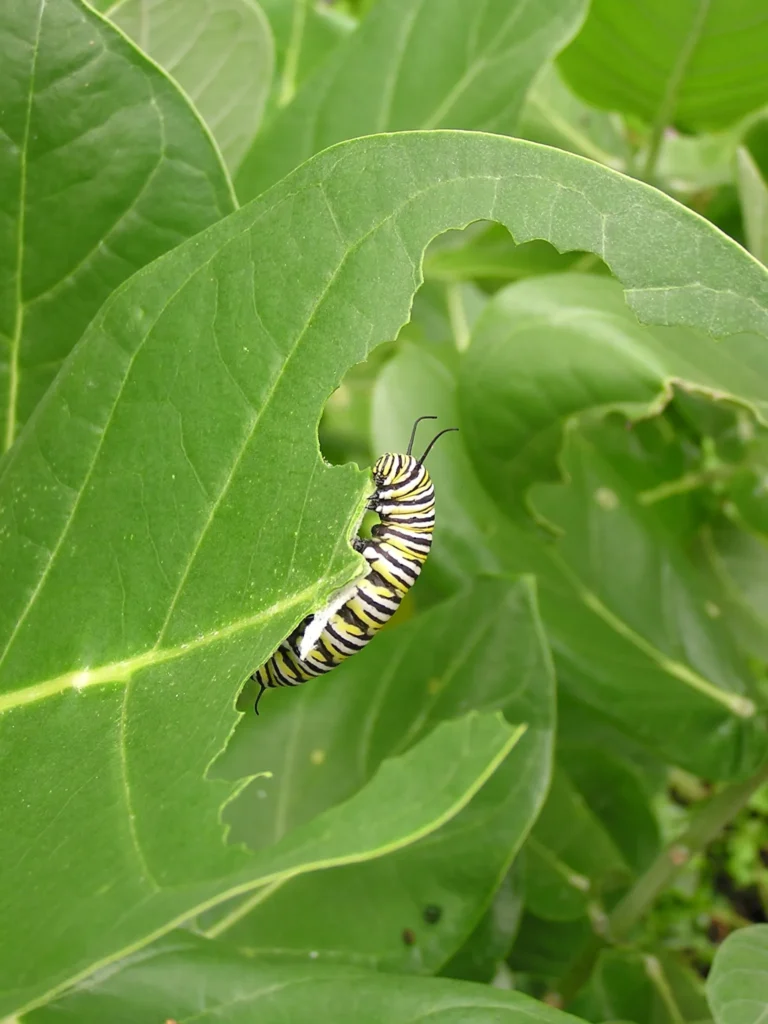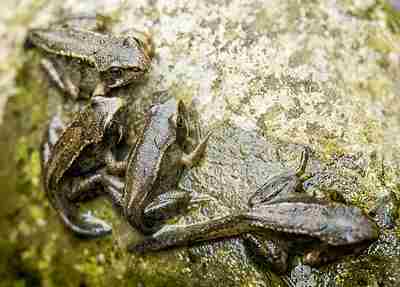Is a Rabbit a Producer or Consumer? Trophic Position of Rabbits Discussed
A rabbit is a consumer in the food chain or ecosystem, because it depends on other organisms for food and survival.
Since these organisms are mostly plants, rabbits can be classified as primary consumers or herbivores. This article discusses the trophic position and role of rabbits in the food chain of ecosystems.
Is a Rabbit a Producer?
No, a rabbit is not a producer because it has no chlorophyll pigments, and cannot manufacture its own food. It also differs from typical producers like algae, vascular and non vascular plants, in terms of its morphology and respiratory process.
Producers, such as algae and plants, have the unique ability to convert sunlight into energy through the process of photosynthesis.
They contain chlorophyll pigments that capture sunlight and convert it into chemical energy, which they use to produce their own food. In contrast, rabbits do not possess chlorophyll pigments and are unable to carry out photosynthesis.
Furthermore, rabbits differ from producers in terms of their morphology and respiratory process. Producers, such as vascular and non-vascular plants, have specialized structures like leaves and stems that enable them to absorb sunlight and nutrients from the soil.
In contrast, rabbits have a different anatomical structure that allows them to consume plant matter for energy and nutrients.
Additionally, rabbits take in oxygen and release carbon dioxide during respiration, which is another characteristic that distinguishes them from producers. Producers do not engage in respiration in the same way as animals do.
Based on the above, a rabbit is not a producer because it lacks chlorophyll pigments and cannot manufacture its own food. Its morphology and respiratory process also differ from typical producers. Instead, rabbits are consumers in the food chain, relying on other organisms, mostly plants, for their energy and nutrient needs.
Reasons Why Rabbits are Not Producers
1. They Have No Chlorophyll
Rabbits are not producers because they lack chlorophyll. Chlorophyll is a pigment found in plants that allows them to carry out photosynthesis, the process by which they convert sunlight into energy. Without chlorophyll, rabbits are unable to produce their own food and must rely on consuming plant matter to gain energy and nutrients.
Chlorophyll is responsible for the green color in plants and is essential for the production of glucose, which serves as the primary source of energy for plants.
Since rabbits do not possess chlorophyll, they are unable to synthesize glucose and must obtain it from external sources. This is why rabbits are classified as consumers rather than producers in the food chain.
As consumers, rabbits depend on other organisms, such as plants, for their energy and nutrient requirements. They consume plant matter, including leaves, grass, and vegetables, to obtain the necessary nutrients for their survival. By consuming plants, rabbits indirectly obtain the energy that was originally captured by the plants through photosynthesis.
Therefore, rabbits are not producers because they lack chlorophyll, which is essential for photosynthesis.
Instead, they are consumers that rely on consuming plant matter to meet their energy and nutrient needs. This distinction in trophic position is important in understanding the role of rabbits in the ecosystem and their dependence on other organisms for sustenance.
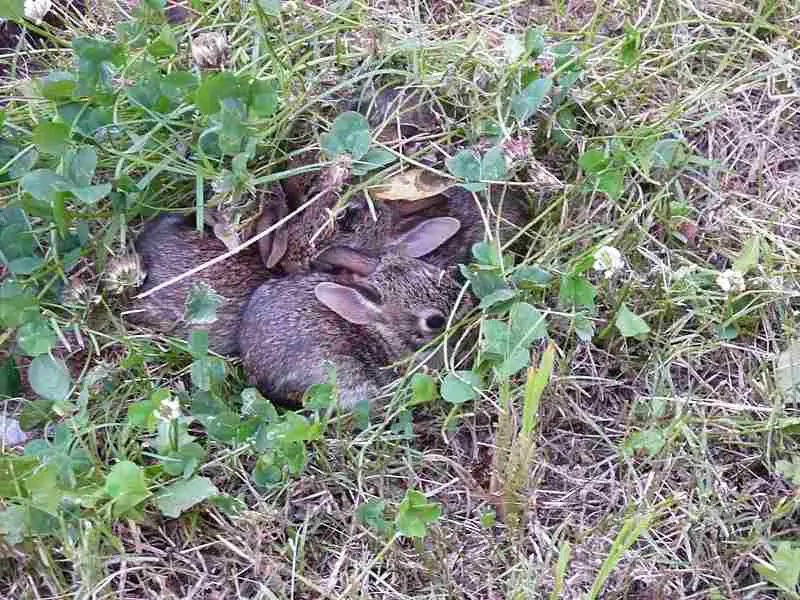
2. Rabbits Must Consume Plant Matter to Gain Energy and Nutrients
Rabbits are not producers because they must consume plant matter to gain energy and nutrients. Unlike plants, which can produce their own food through photosynthesis, rabbits lack the ability to synthesize glucose and other essential nutrients. Instead, they rely on consuming plant material to meet their metabolic needs.
By consuming plants, rabbits obtain the energy that was originally captured by the plants through photosynthesis.
They feed on a variety of plant matter, including leaves, grass, and vegetables, to obtain the necessary nutrients for their survival. This makes them dependent on other organisms, such as plants, for their energy and nutrient requirements.
The process of consuming plant matter involves breaking down the complex carbohydrates, proteins, and other organic compounds present in the plants into simpler forms that can be absorbed and utilized by the rabbit’s body.
Through digestion, the rabbit’s body extracts the energy and nutrients it needs for growth, reproduction, and maintenance.
Rabbits have specialized digestive systems that allow them to efficiently extract nutrients from plant material. They have a large cecum, which is a specialized chamber in their digestive tract where microbial fermentation takes place.
This fermentation process helps break down cellulose, a complex carbohydrate found in plant cell walls, into simpler sugars that can be absorbed by the rabbit.
Therefore, rabbits are not producers because they lack the ability to produce their own food through photosynthesis. Instead, they must consume plant matter to gain the energy and nutrients they need for survival.
This dependence on other organisms for sustenance classifies rabbits as consumers in the food chain. Their specialized digestive systems enable them to efficiently extract nutrients from plant material, ensuring their survival in their natural habitat.
3. Rabbits Take-in Oxygen and Release Carbon Dioxide During Respiration
Rabbits take-in oxygen and release carbon dioxide during respiration, which is another reason why they are not producers. Unlike plants, which undergo photosynthesis to produce oxygen and glucose, rabbits rely on the oxygen in their environment to support their metabolic processes. Through respiration, rabbits inhale oxygen and exhale carbon dioxide, a byproduct of cellular respiration.
During respiration, rabbits utilize the oxygen they breathe in to break down glucose and release energy. This energy is essential for various physiological functions, such as muscle contraction, digestion, and reproduction. As a result of this metabolic process, carbon dioxide is produced as a waste product and expelled from the rabbit’s body.
The exchange of gases during respiration occurs in the rabbit’s lungs. Oxygen from the air is diffused into the bloodstream, where it binds to hemoglobin in red blood cells and is transported to cells throughout the body.
At the cellular level, oxygen is used in the mitochondria to generate energy through the process of aerobic respiration. In this process, glucose is broken down into carbon dioxide and water, releasing energy that is stored in the form of ATP.
The carbon dioxide produced during cellular respiration is transported back to the lungs through the bloodstream. It is then exhaled from the rabbit’s body during expiration. This continuous cycle of inhaling oxygen and exhaling carbon dioxide ensures the rabbit’s survival by providing the necessary oxygen for cellular processes and removing waste carbon dioxide.
Therefore, rabbits are not producers because they rely on the intake of oxygen and release of carbon dioxide during respiration.
Unlike plants, they do not have the ability to produce their own oxygen or glucose through photosynthesis.
Instead, rabbits depend on their environment for oxygen and obtain energy by consuming plant matter. This dependence on external sources of oxygen and nutrients classifies rabbits as consumers in the trophic hierarchy.
Is a Rabbit a Consumer?
Yes, rabbits are consumers in the trophic hierarchy, because they rely on consuming materials derived from other living organisms, specifically plants, for their energy and nutrient needs. This classification as a consumer is based on two key reasons.
Firstly, rabbits are dependent on other organisms for their energy and nutrients. Unlike producers, such as plants, which can synthesize their own food through photosynthesis, rabbits lack the ability to produce their own food. Instead, they must obtain energy and nutrients by consuming plant matter. This makes them reliant on the availability of plants in their environment.
Secondly, rabbits are considered primary consumers because they primarily feed on plants. Their diet consists mainly of grasses, leaves, and other plant materials.
By consuming these plant materials, rabbits obtain the energy and nutrients necessary for their survival and growth. They play an important role in the transfer of energy and nutrients from plants to higher trophic levels in the ecosystem.
By being consumers, rabbits contribute to the flow of energy and matter through the food chain. They serve as a link between producers and higher-level consumers, such as predators. Through their feeding habits, rabbits help to regulate plant populations and define the structure of ecosystems.
Reasons Why the Rabbit is a Consumer
1. Dependence on Other Organisms for Energy and Nutrients
Rabbits are consumers because they depend on other organisms for energy and nutrients. As herbivores, rabbits rely on consuming plant matter to meet their nutritional needs. They cannot produce their own energy through photosynthesis like producers, such as plants, because they lack chlorophyll. Instead, rabbits must obtain energy by consuming vegetation.
By feeding on plants, rabbits act as primary consumers in the food chain. They consume the producers, which are the plants, and obtain energy from the organic matter they consume. This makes them an important link in the ecosystem, as they transfer energy from plants to higher-level consumers.
In addition to energy, rabbits also depend on other organisms for nutrients. They require a variety of vitamins, minerals, and other essential compounds that are found in the plants they consume. Without access to these nutrients, rabbits would not be able to survive and thrive.
The dependence of rabbits on other organisms for energy and nutrients highlights their role as consumers in the ecosystem. They play a crucial part in the food chain by consuming plant matter and transferring energy to higher trophic levels. This makes them an integral part of the overall balance and functioning of the ecosystem.
2. Rabbits are Primary Consumers Because they Feed on Plants
Rabbits are primary consumers because they feed on plants. This means that they occupy the second trophic level in the food chain, directly consuming producers. By consuming plant matter, rabbits play a defining role in energy transfer within the ecosystem.
One reason why rabbits are classified as primary consumers is their herbivorous diet. They primarily feed on grass, leaves, and other plant materials. This diet provides them with the necessary energy and nutrients to survive and reproduce. Rabbits have specialized digestive systems that allow them to efficiently extract nutrients from plant matter.
Another reason why rabbits are primary consumers is their feeding behavior. They are known for their grazing habits, where they consume large quantities of vegetation. This consumption of plant matter helps to control plant growth and maintain the balance of the ecosystem. By feeding on plants, rabbits also contribute to the dispersal of seeds, aiding in the reproduction of plant species.
Rabbits as primary consumers have a significant impact on the ecosystem. Their feeding habits can influence the abundance and distribution of plant species, which in turn affects other organisms in the food chain. They serve as a vital link between producers and higher-level consumers, transferring energy from plants to predators and scavengers.
Therefore, rabbits are classified as primary consumers because they feed on plants. Their herbivorous diet and grazing behavior make them important contributors to the energy flow within the ecosystem.
Is a Rabbit a Decomposer?
No, a rabbit is not a decomposer because it does not derive nutrients from organic remains or waste. Decomposers, such as bacteria and fungi, play a vital role in the ecosystem by breaking down organic waste matter, thereby releasing nutrients back into the environment. However, rabbits are herbivorous animals that primarily feed on plants, not organic remains.
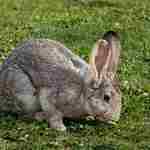
Rabbits are not saprophytic organisms like decomposers. They do not rely on decaying organic matter for their energy and nutrient needs.
Instead, they obtain their energy and nutrients from the plant matter they consume.
Rabbits have specialized digestive systems that allow them to efficiently extract nutrients from plant material, breaking it down and absorbing the necessary components.
Unlike decomposers, rabbits do not facilitate the process of biodegradation directly. They do not contribute to the breakdown of organic matter or the recycling of nutrients in the same way that decomposers do. Instead, rabbits play a different role in the ecosystem as primary consumers, feeding on plants and transferring energy from the producers to higher-level consumers.
While rabbits are not decomposers, they are important primary consumers in the food chain. They obtain their energy and nutrients from plant matter, contributing to the flow of energy within the ecosystem.
Reasons Why Rabbits are Not Decomposers
1. They Do Not Derive Nutrients from Organic Remains or Waste
Rabbits are not decomposers because they do not derive nutrients from organic remains or waste. Unlike decomposers such as bacteria and fungi, rabbits do not break down dead organic matter to obtain energy and nutrients. Instead, they rely on consuming fresh plant matter for their sustenance.
As herbivores, rabbits primarily feed on plants such as grass, leaves, and vegetables. They have specialized digestive systems that allow them to extract nutrients from plant material. Through the process of digestion, rabbits break down the cellulose in plants and absorb the nutrients they need for growth and energy.
While decomposers play a crucial role in recycling nutrients in ecosystems, rabbits do not participate in this process. They do not contribute to the breakdown of organic matter or the release of nutrients back into the environment. Instead, rabbits occupy a different trophic level as consumers, obtaining their energy and nutrients by consuming producers (plants).
2. Rabbits are Herbivorous and Not Saprophytic
Rabbits are herbivorous animals, which means they primarily consume plant material.
This is a key reason why rabbits are not decomposers. Unlike decomposers, such as bacteria and fungi, which obtain nutrients from breaking down dead organic matter, rabbits rely on fresh plant matter for their sustenance.
As herbivores, rabbits have specialized digestive systems that allow them to extract nutrients from plant material. They have a unique ability to break down the cellulose in plants through a process called fermentation. This enables them to access the energy and nutrients they need for growth and survival.
Unlike decomposers, rabbits do not contribute to the breakdown of organic matter or the release of nutrients back into the environment.
Their role in the ecosystem is as consumers, obtaining their energy and nutrients by consuming producers, which are plants. By feeding on plants, rabbits play a vital role in controlling plant populations and shaping the structure of plant communities.
It is important to note that while rabbits do not participate in the process of decomposition, they still play a significant ecological role as primary consumers. They are an important food source for predators and help to transfer energy and nutrients through the food chain.
Deducing from the above, rabbits are herbivorous animals and not saprophytic decomposers. They obtain their energy and nutrients by consuming plant material, rather than breaking down organic substrates.
3. Biodegradation is Not Directly Facilitated by Rabbits
One of the reasons why rabbits are not decomposers is that they do not directly facilitate biodegradation. Unlike decomposers such as bacteria and fungi, which play a crucial role in breaking down organic remains and waste, rabbits do not contribute to this process.
Rabbits are herbivorous animals that rely on fresh plant material for their energy and nutrient needs. They do not derive nutrients from organic remains or waste, nor do they actively participate in the breakdown of dead organic matter. Instead, their digestive systems are specialized for extracting nutrients from plant material, allowing them to thrive on a diet of vegetation.
While rabbits do produce waste in the form of feces, their waste does not directly facilitate biodegradation. The feces of rabbits contain undigested plant material, which can serve as a source of nutrients for decomposers like bacteria and fungi. However, the breakdown of this waste is primarily driven by the activity of these decomposers, rather than the rabbits themselves.
In the ecosystem, rabbits play a different role as primary consumers, feeding on plants and transferring energy and nutrients through the food chain.
Their feeding habits contribute to the control of plant populations and the shaping of plant communities. However, their role in nutrient cycling is indirect, as they rely on decomposers to break down organic matter and release nutrients back into the environment.
Therefore, rabbits are not directly involved in the process of biodegradation. While they produce waste that can serve as a nutrient source for decomposers, their primary role in the ecosystem is as consumers of plant material.
Is a Rabbit a Producer, Consumer or Decomposer?
Based on the discussion so far, it is clear that a rabbit is neither a producer nor a decomposer. Rabbits lack chlorophyll and cannot produce their own energy through photosynthesis.
They rely on consuming plant matter to gain energy and nutrients, making them consumers in the food chain. Additionally, rabbits do not directly facilitate biodegradation as they do not derive nutrients from organic remains or waste.
Their role in the ecosystem is primarily as primary consumers, feeding on plants and transferring energy and nutrients through the food chain. Therefore, it can be concluded that a rabbit is a consumer in the trophic hierarchy.
Conclusion
* In the previous sections, we explored whether a rabbit is a producer, consumer, or decomposer.
* We discussed the reasons why rabbits are not producers, highlighting their lack of chlorophyll and dependence on consuming plant matter for energy and nutrients.
* Additionally, we examined why rabbits are considered consumers, as they rely on other organisms for their energy needs and are primary consumers due to their herbivorous diet.
* Furthermore, we explored why rabbits are not decomposers, emphasizing their inability to derive nutrients from organic remains or waste.
* Based on the factors highlighted, it can be determined that rabbits are heterotrophs in the trophic hierarchy, playing a vital role as primary consumers in the food chain.
